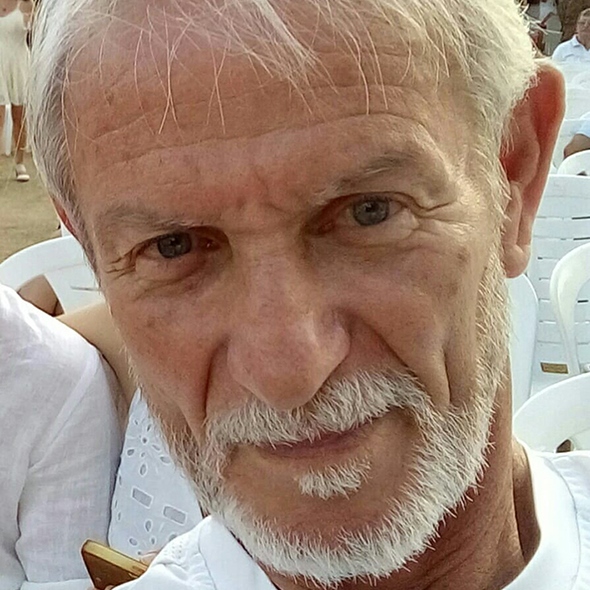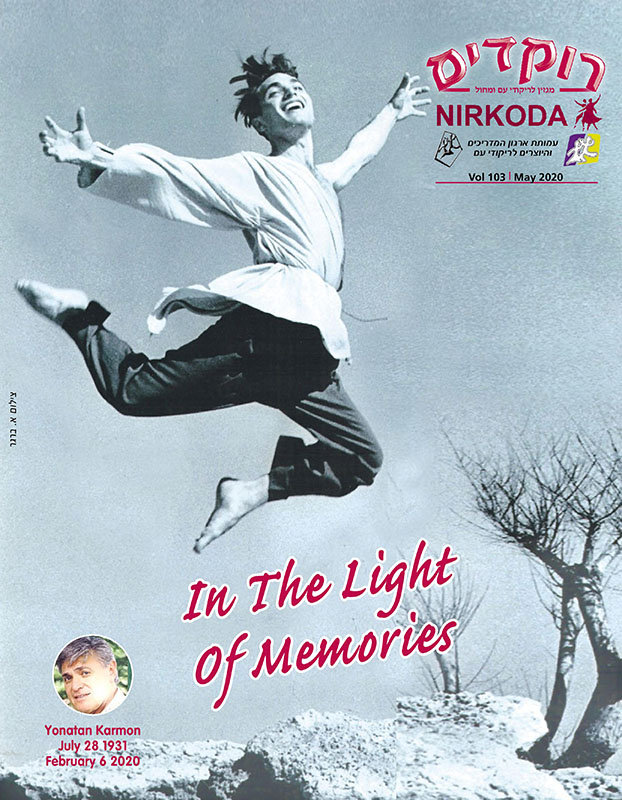- Home
- Rokdim Nirkoda 103
- “Ha’Lehaka Ha’Merkazit” and “Lehakat Karmon”
In 1956, a dance troupe of dancers from all over Israel – towns, kibbutzim and moshavim – was established. Naturally, most of the dancers were members of youth movements, and lovers of Israeli song and dance.
This group was called “HaLehaka HaMerkazit of the Histadrut” and it was led by Yonatan Karmon. Yonatan choreographed all the dances for the troupe. He was inspired by folk and holiday dances that were danced in kibbutzim, and also based upon modern and classical dance in which he was trained.
The troupe was formed with the aim of establishing a “National Troupe” to represent the State of Israel around the world as well as to perform at Histadrut and state events around Israel. It was supported by the Education Department of the Histadrut and the Dance Department headed by Tirza Hodes. In order to create the troupe, auditions were held at Beit Lessin in Tel Aviv. Of the dozens of dancers who came to the auditions from across Israel, 12 couples were selected. The dancers were tested in dance ability and mastery of Israeli folk dances. Some of the dancers were familiar with Yonatan from his work with troupes such as “Alumim Petach Tikva” and “Hapoel Tel Aviv”.
It was a troupe of wonderful dancers who performed in many venues throughout Israel. When I say “venue,” I mean not only the local air-conditioned Heichal HaTarbut, but every type of stage around the country whether concrete, linoleum or rough wooden planks filled with spikes that hurt the dancers’ bare feet.
The young dancers came every weekend, from all over the country, to grueling rehearsals at Beit Lessin in Tel Aviv, where they trained in a variety of dance routines that Karmon created. They also practiced a lot to improve their personal ability and technique.
The troupe performed at the Dalia Dance Festival in 1958, which was also the tenth anniversary of the State of Israel. Troupe members slept in tents, yet the joy of dance and life was at its peak. Although we were the best troupe in Israel and at the Dalia Dance Festival, the manager of the Histadrut Education Department claimed that the troupe was not yet ready to perform abroad. That is when the troupe posed with a sign, cynically written, near the tent in the picture from the festival.
In 1958, the plan was that the troupe, together with Lehakat HaStudentim from Jerusalem, would represent Israel in Turkey. Everything was ready for the trip, but the day before departure, the trip was cancelled due to political reasons (probably due to the crisis that occurred after the Sinai war).
The next day we, 6 – 7 frustrated troupe members, sat at a cafe in Tel Aviv and came up with the idea to enter the competition held at the American Zionist House in Tel Aviv in order to bring Israeli culture to the United States. The competition was organized by the ZOA – the Zionist Organization of America that was established in 1897 to promote relations with Israel. Among its leaders were Louis Brandeis, Abba Hillel Silver, Samuel Wise, and others. The purpose of the competition was to find Israeli artists to perform on the famous Ed Sullivan Show. In the initial publicity for the competition, it was stated that they will choose 5 types of performances and a total of 8 artists.
In spite of this limitation, we called Yonatan and raised the idea of quickly forming a troupe of five couples, with Yonatan’s guidance and participation. Yonatan was enthusiastic about the idea. We started rehearsals and entered the competition at the American Zionist House, under the name “Lehakat Karmon“.
The bottom line was that Ed Sullivan, who was present at the competition, became enthusiastic about the troupe that won first place and decided to have it perform on his program. In the delegation with us were also the violinist Itzhak Perlman, who was 13 years old at the time, the vocalists Ran and Nama, the silhouette artist Natan Almozolino, the contortionist Naomi and the piano duo, Bracha Eden and Alexander Tamir.
The Lehaka left for the United States in October 1958 and performed nationwide for six months. Lehakat Karmon had additional performances on the Ed Sullivan show.
After this Karmon Troupe, Yonatan established many troupes that have grown in the number of dancers and have performed across the country and around the world.
On their first voyage in the United States, Lehakat Karmon released their first record album, which was followed by additional records. The story of “Lehakat Karmon” became widely known in the history of Israeli dance.
As a member of Karmon’s first troupe, I would like to point out the fairness in his decision to build this first troupe as a cooperative (see photo) so that the troupe’s revenue would be shared among the members.
I had the honor and privilege to dance for many more years in the various Karmon troupes. These were wonderful periods in my life.









Comments
התראות